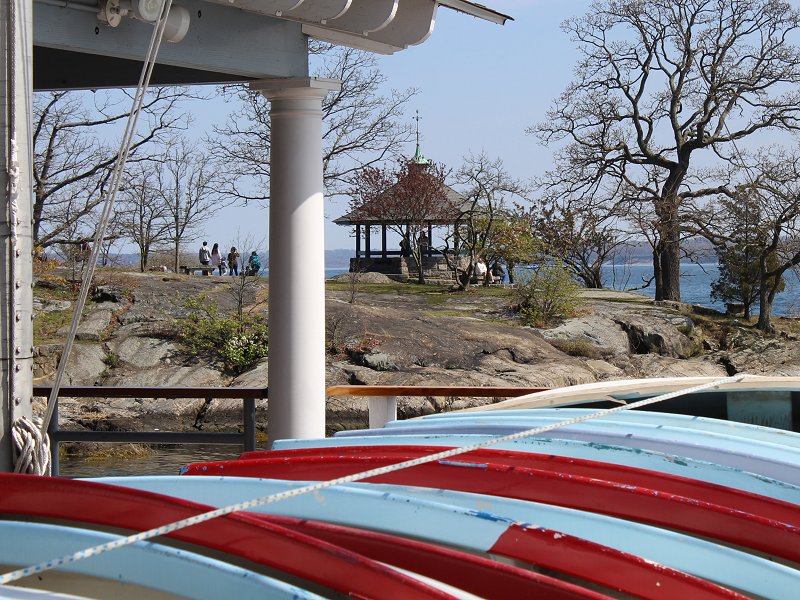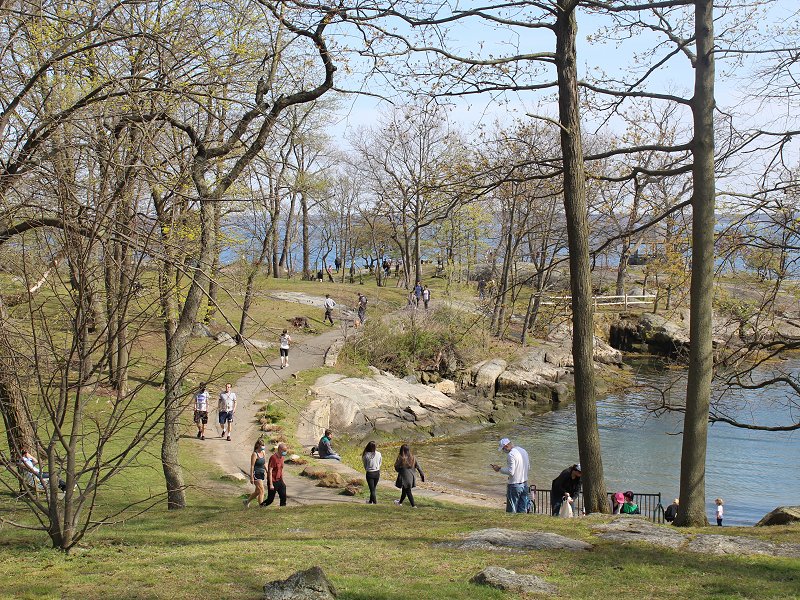
etudiant
-
Posts
790 -
Joined
-
Last visited
Content Type
Profiles
Blogs
Forums
American Weather
Media Demo
Store
Gallery
Posts posted by etudiant
-
-
25 minutes ago, cleetussnow said:
Cuomo can’t figure out how to fund the state in normal times, and doesn’t know why we keep missing revenue targets. He said it plainly.
He is doing great on the virus response. His budget skills are atrocious. One of the worst in the US. Maybe CT and IL are worse?
Have to disagree on his management of the virus issue.
He has killed the arts, education and entertainment activities in NYC with his egregious lockdown policies. Those are the economic engines of the state..
So having induced cardiac arrest, he is surprised the patient is not generating the expected income?
PS Not a fan, obviously, of the shutdown, whether by Trump or Cuomo. Dreadfully bad policy which will hurt us for years to come.
-
 1
1
-
-
There are solar farms that are close to that size, so it is possible to test this with real world examples.
Afaik, there has not been any such induced precipitation reported.
-
 1
1
-
-
14 hours ago, hudsonvalley21 said:
Maybe they could add a few more languages to the signs. It could be that these pictured future world leaders aren’t familiar with the languages that are posted.

Young people don't read, it's a social disadvantage to do so.
-
50 minutes ago, uncle W said:
its a lot easier than what it was 35 years ago...a lot more expensive too...
Just excellent, really like model trains, but never had the real ones, just kiddie stuff.
Are there still any domestic manufacturers left? I'd thought that Lionel and Maerklin had both gone bankrupt.
-
Arctic ice area seems to be following about the same trend as 2016. That suggests a minimum extent around 12 MM square km , somewhere close to a record low.
-
Have to say that April may have surprised on the cool side, but NYC is getting a wonderful spring for flowers.
The combination of cool weather with repeated rains is keeping the cherry blossoms at peak even as the leaves unfold. Plus the various tulip plantings have never looked so good.
Today was the first really sunny spring day we've had, also the first one that had the bugs out in some quantity.
-
-
7 hours ago, RyanDe680 said:
With regard to the herd immunity - Sweden has gone that route and has a 12% death rate. Granted that’s with testing less than 0.2% of the population.
The Sweden death rate is more than 3x that of its Nordic neighbors, just about that of Switzerland, but they avoided trashing their economy.
Considering the misery the lockdowns have inflicted and the massive debts that we're building up because of it, the Swedish choice seems a lot more humane, despite the pain.
-
No obvious impact thus far. The CO2 data shows no diminution at all thus far from the current record levels See .https://www.esrl.noaa.gov/gmd/ccgg/trends/
-
Nothingburger to date here in Manhattan.
A bit of rain,tenth of an inch tops, small gusts.
-
On 4/20/2020 at 8:05 AM, gravitylover said:
Heheh my problem is with much smaller critters but our 2 dogs may have solved that, they caught a couple of moles over the last few months so maybe this year I don't have half eaten heads of lettuce problems.
The dogs need remedial training, they got the wrong guys. Moles are your friends, they don't do vegetables, only bugs and worms.
That said, lawn maintenance and moles are not very compatible, even if veggie gardens and moles are just fine.
-
 1
1
-
-
2 hours ago, gravitylover said:
I think this may end up being the year our property ends up looking more parklike than ever before but I'm going to try to reduce the amount of grass to mow. It seems like 5 days a week we're doing hours of yardwork. We have some good sized projects ahead. If it comes together right we'll have a food producing setup like nobody else in the 'hood.
Food for whom?
My garden in Connecticut was harvested messily by the local raccoons, just before the corn was ripe. They laugh at fences, so hope you have a serious dog.
-
5 hours ago, gravitylover said:
I have birds fly into the windows pretty often. We have a big picture window that kills a half dozen a year and injures many more. The sunroom windows get beat up by birds flying into them, I think they see the plants inside and go to land on them but find a sheet of glass in the way.
You might be able to cut down on that by pasting a couple of hawk decals on those windows. (https://windowalert.com )
One always feels bad when some wild creature gets injured that way. The stickers do help some, but are not perfect.
-
 2
2
-
-
1 hour ago, snowman19 said:
Just read that JB is back to hyping a very cold and snowy late March and April in the east lol I have no words....
Well beyond my pay grade, but where is the cold to come from? I recognize the arctic has been colder than average this year, but one would think that even a substantial cold arctic air mass would pick up a fair amount of heat on the way down to this area.
-
1 hour ago, Nibor said:
First time it's been postponed in 258 years.
Interesting, so it was still held during the Spanish Flu outbreak?
-
Ticks are the worst, but people love deer, which are their adult vector, so they flourish.
I'd read that ticks will succumb to a very cold and dry climate, which unfortunately leaves out this winter. So avoid greenery and tall grass this year.
-
It may in fact be a lot easier. I expect travel to take a serious hit as people cocoon for the duration of the outbreak.
So there will be more interest in storm news as well as fewer others on the road.
-
22 minutes ago, weatherpruf said:
A vaccine is years away. Further, companies don't want to invest in vaccines for novel viruses since it may not pay off.
We've had flu vaccines for many years, but they work only partially, maybe 70% if we're lucky. I doubt the vaccine for this bug will perform much better.
For people over 50, they should try really hard not to catch it. That is the best advice imho.
-
Flu vaccine is often not very effective, as there are many different flu variants. This virus may be equally unpredictable, just a lot more dangerous.
Meanwhile, we are in the early stages of discovering the downside to a globalized economy, it busts all over rather than in pieces. The shortage of masks is just an early symptom, medicines and chips will soon follow. They all reflect the collapse of production in China.
-
 1
1
-
 1
1
-
-
No expert, but am struck how closely the recent Arctic ice area is tracking the 2012 values. See: https://cryospherecomputing.tk
May just be coincidence, but perhaps an early indication of history repeating.
-
 1
1
-
-
2 hours ago, MJO812 said:
Wow gefs going out to 35 days soon
Even more illuminating than their current longer term forecasts presumably...
-
On 2/26/2020 at 5:00 PM, LibertyBell said:
what frustrates me is that we've been talking about controllable fusion since the 80s....we've had so many technological advances in so many fields since then, why is it taking so long to develop viable fusion reactors?
Actually, there has been good progress, with the performance of the devices improving by about a factor of 10 every decade since the 1950s.
Based on that trend, we should have working prototypes in another decade or so, but the effort is desultory at best. The international centerpiece of fusion is the ITER reactor in France. It was supposed to be ready by 2010, now expected to be finished by 2025, with the first real fusion experiments around 2035 - 2040. Basically a UN managed research effort, makes herding cats look easy.
The problem is that cheap gas and subsidized wind/solar drained any urgency from the search for more energy, so this is run as a hobby effort, no urgency at all. I've visited the ITER site, no weekend work, single shifts, a handful of workers, lots of visiting dignitaries and probably masses of administrators behind the scenes in Geneva and elsewhere.
-
 1
1
-
-
3 hours ago, raindancewx said:
Is there a drought issue, given a warmer than usual climate with a sub par snowpack?
-
5 hours ago, Isotherm said:
Some snowfall statistics for my location [partially interpolated with New Brunswick, pre-2000].
Even though this winter and last winter have been quite snowless, the decadal running and 30-year running snowfall averages are very good for Monmouth County.
Current 30-year running average [1988/89-2018-19]: 31.2"
If this winter were to end today snowfall wise, the 1989/90-2019-20 30 year normal would be 31.0" here, a significant increase from 1980-2010, which was 28.9".
My decadal 2010-present snowfall average is 38.7" [the highest of any decade since 1950].
If this winter were to end today, the new 2010-2020 decadal average would be 35.4", which would still be higher than 2000-2010's of 33.8" and the 1960s of 34.1".
Conclusion: while the past two winters made a decent dent, the overall decadal and 30-year running snowfall average locally is still the best its been since likely the early 1900s.
Thank you, Isotherm, for bringing us all back to the facts!
This is the kind of reality check that is often missing in these discussions.







Spring 2020 Banter
in New York City Metro
Posted
Both are splendid and a delight to the eye, so getting them is always exciting.
Orioles usually come for fruit, like orange quarters or even jelly, while Grosbeaks are seed eaters more likely to chow down on sunflower seeds or maybe peanuts.